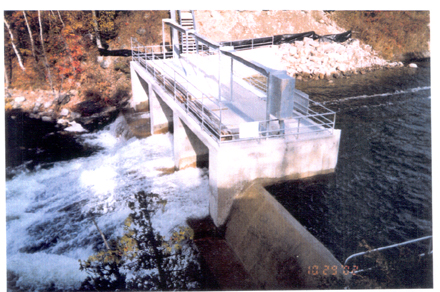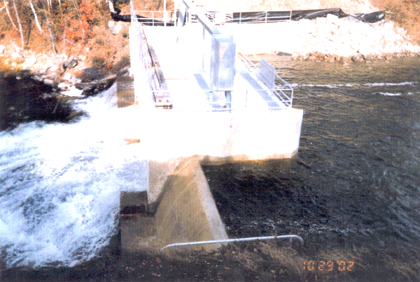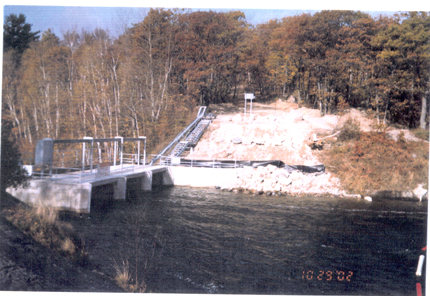Fire, Forest, Water
Advocating for Lake Panache



Walker Dam History
The following information was obtained by reviewing the files at the Ministry of Natural Resources.
The dam on Lake Panache is located between Lake Panache and Walker Lake and is known as the Walker Dam. There are two other dams downstream from the Walker dam. The next dam is located at the outlet of Lang Lake and the third dam is located at the outlet of Freud Lake. This dam is visible from Highway 6 at Whitefish Falls.
The original dam was a wooden structure built in 1890 by the Manly Chew Lumber Company. The purpose of the dam was to facilitate log drives to Georgian Bay. The Manly Chew Lumber Company had a mill in Midland Ontario. This dam collapsed in 1924.
The Victoria Harbour Company had a timber license which was due to expire in one year and there for they constructed a temporary dam 1924. This company operated a mill close to Midland and a one time it was the second largest mill in Canada. Their primary source of logs was from the north shore of Georgian Bay. This temporary dam was repaired by the Forestry Department during the fall of 1929, however, unknown persons cut away a portion of that dam the same year. The dam was repaired again and once more vandalized. In the summer of 1930, an Espanola club once more repaired the dam.
In 1930, the District Forester Sudbury District wrote the Deputy Minister of Forestry to request permission to rebuild the dam. The dam had deteriorated to such a point that the low water levels were affecting the bass spawning beds and safe navigation on the lake was questionable.
The Lake Panache Property Owners Association was formed the same year with an objective to secure action in keeping the level of the water in Lake Panache at its present level. This was approximately 4 feet above normal run of the river level. This level was consistent with the levels created by the previous dams from 1890 and 1924.
On August 6 1931, the plans for a new dam were approved and the dam was constructed in 1933 by the Ontario Department of Public Works. The Chief Ranger was given the responsibility of managing the dam to accommodate the different interests on the lake and to prevent the water levels from getting so low that the fire patrol boats could not operate safely. After the dam was completed there continued to be numerous complaints from the campers and property owners regarding high water levels especially in the spring. In July of 1935, the Surveyor General of Ontario directed that the high and normal levels of the lake be set at 100.5 feet and 99.5 feet (local datum)
In 1941, a survey consisting of a running profile from Lake Huron to Lake Panache was commissioned. The report identified that the design of the dam’s two sluice ways were only capable of managing the water levels within fairly narrow limits. The survey in January of 1942 noted that the top of the dam was set at 104 feet local datum.
In the spring of 1951, Lake Panache experienced flood levels which were reported to be “the worst in camping on the Lake”. As a result the Lake Panache Property Owners Association requested a full investigation into the Lake Panache water shed. Among other concerns, the Association felt the existing dam was incapable of handling abnormal water flow from the Vermillion River. Once the Vermillion River reaches a certain flood level , excess water will flow through the Muskawin and Blackwater Creek systems into Round Lake and then into Lake Panache. On May 24 1951 the Surveyor General of Ontario and a representative from the Division of Surveys and Engineering, Department of Lands and Forests inspected the dam. They recommended that the west wing wall of the dam be rebuilt with the addition of a new sluice way which would increase the discharge by approximately forty percent. They also recommended a regulated maximum water level of 101 feet and a minimum level of 98.5 feet (local datum) from May 15 to September 15 of each year. The plans for reconstruction were approved on June 29, 1951 and the Ontario Department of Public Works completed the construction in 1952.
In 2001, an inspection of the dam indicated there were serious structural problems with this dam and that it was in need of replacement. A temporary coffer dam was built in front of the dam and the entire existing dam was removed. A new dam was constructed and became operational in 2003. The temporary coffer dam was built using specific sized rocks and after reconstruction, these were redistributed upstream from the new dam in order to create a fish spawning area. The newer dam included sluice ways as well as a weir type spillway set at the desired June level. This resulted in a reduced amount of work in managing water levels as any water above the June level automatically flows over the spill way. Each fall the sluice gates are used to drop the lake level in order to allow for a capacity to manage the influx of water the next spring.
